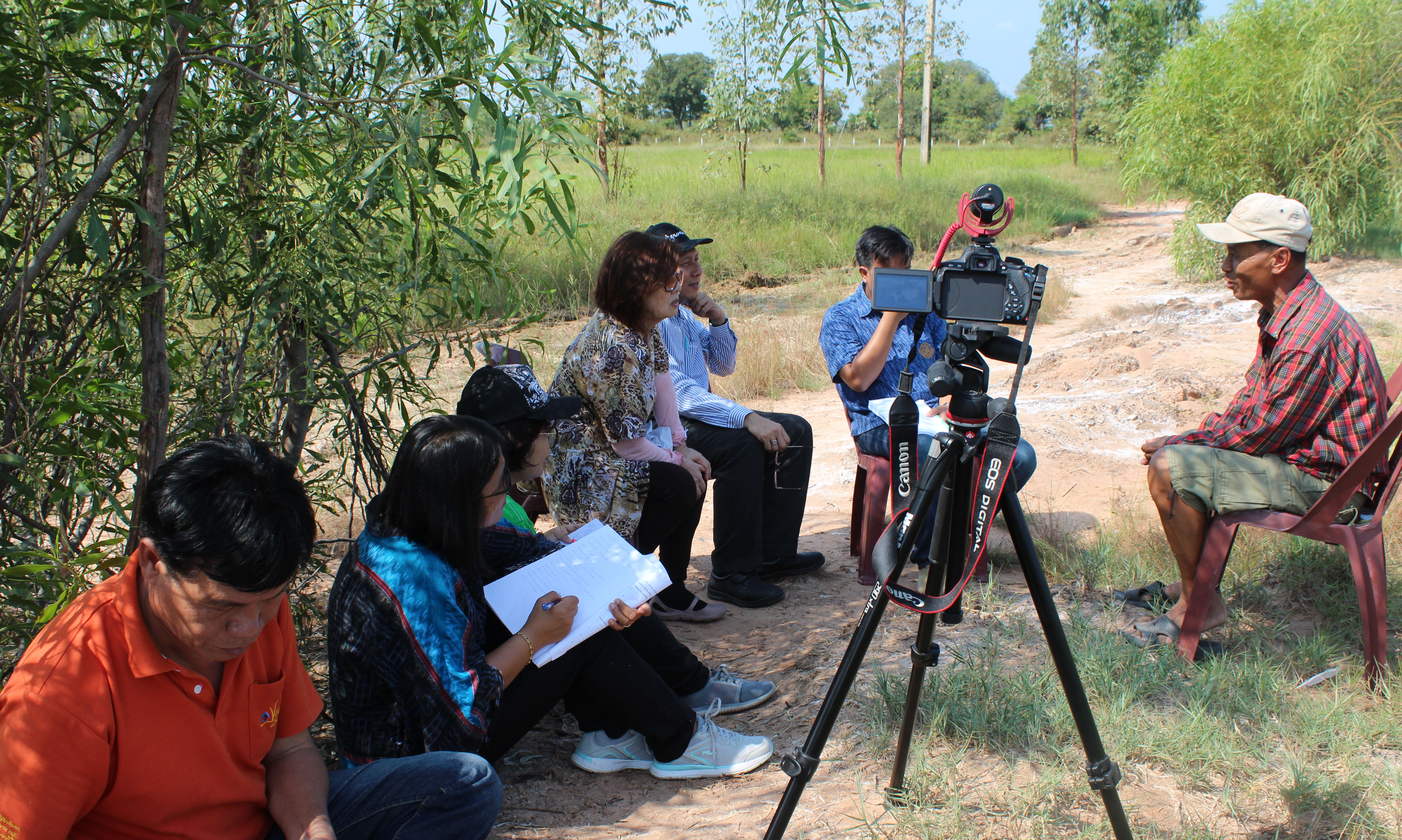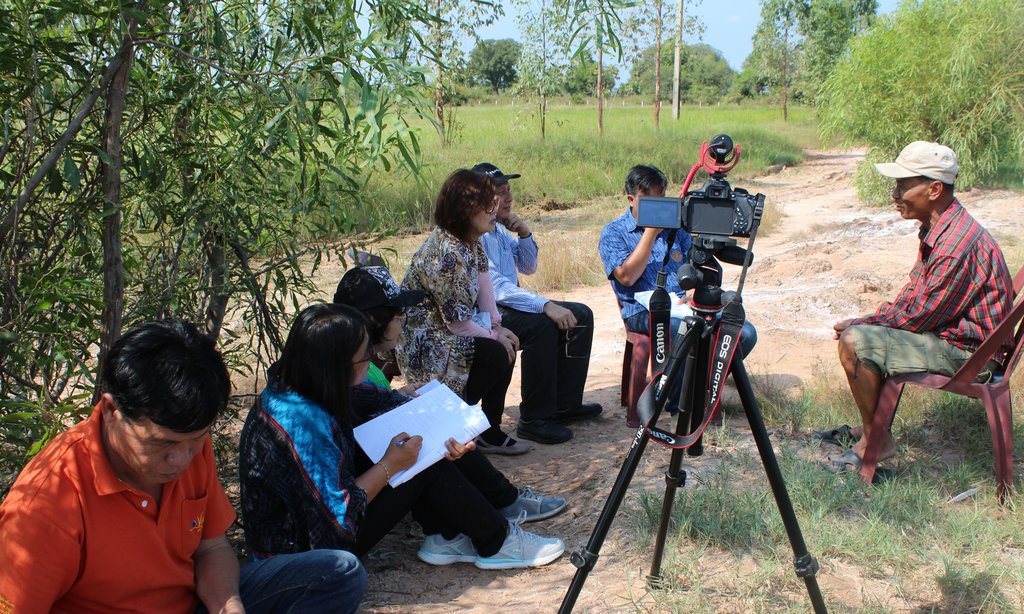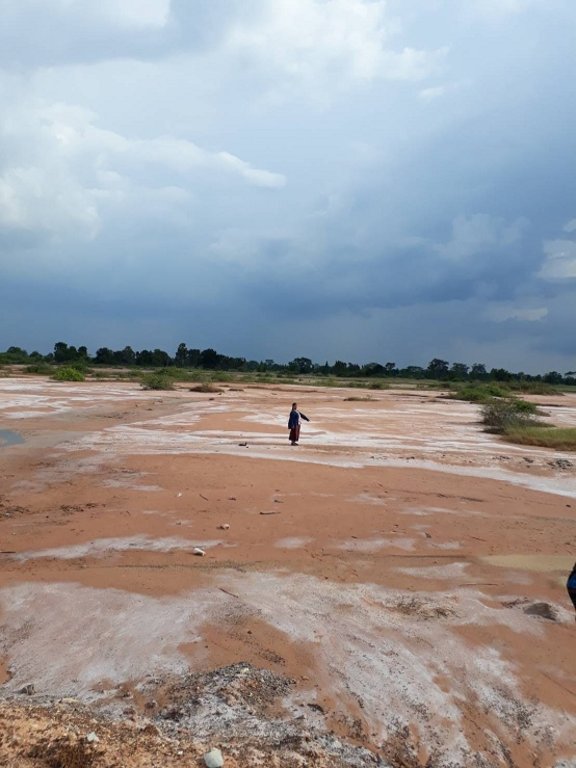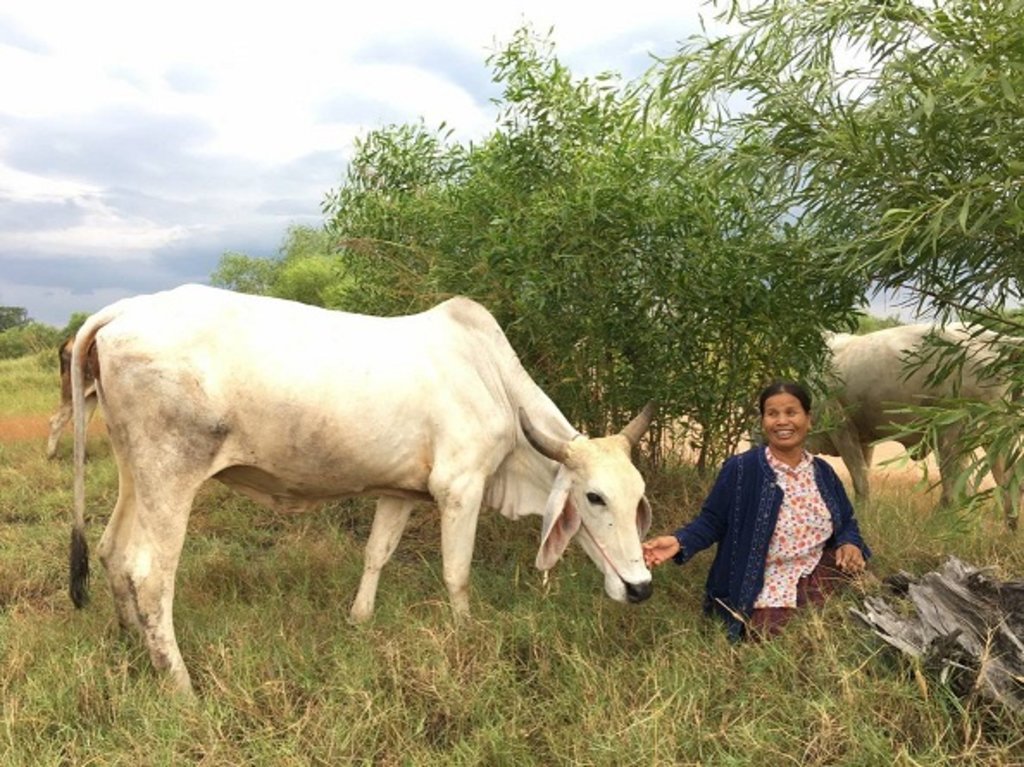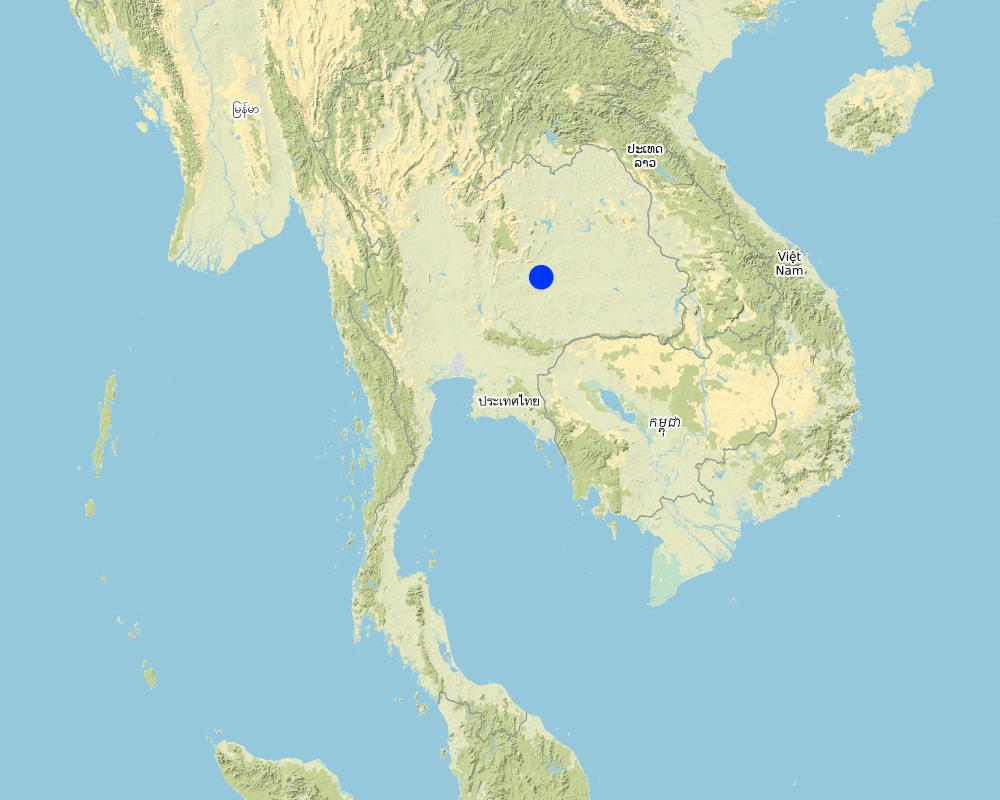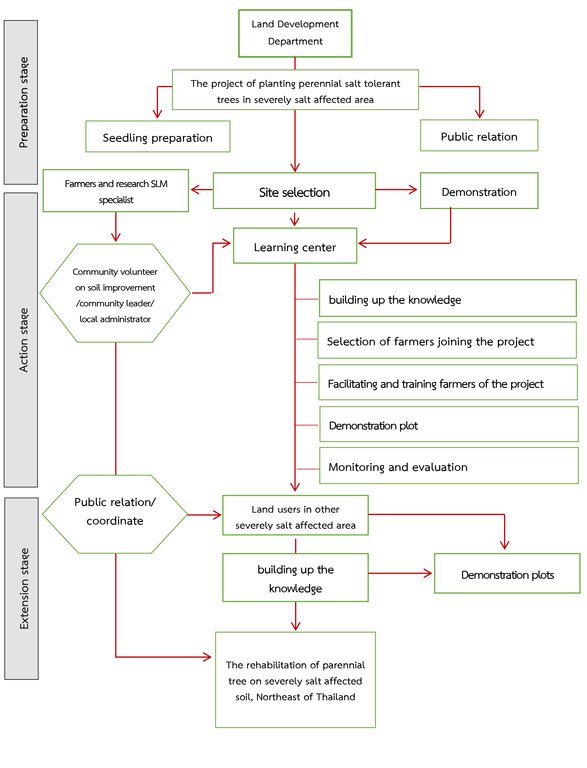Promotion of Acacia ampliceps on severely salt-affected soil [泰国]
- 创建:
- 更新:
- 编制者: Phatranit Chuaysanoi
- 编辑者: –
- 审查者: Samran Sombatpanit, Rima Mekdaschi Studer, William Critchley
Planting Acacia ampliceps on severely salt-affected land.
approaches_4203 - 泰国
查看章节
全部展开 全部收起1. 一般信息
1.2 参与方法评估和文件编制的资源人员和机构的联系方式
土地使用者:
Tathaisong Nurean
+66-62-1521591
-
25 Ban Kok Sa-ard, Moo 10, T. Danchang, A. Buayai, Nakhon Ratchasima, Thailand
泰国
土地使用者:
Panikom Chartee
+66-85-4395414
-
136/1 Moo 2, T. Danchang, A. Buayai, Nakhon Ratchasima
泰国
土地使用者:
Salanok Mongkoen
+66-98-1181365
-
184 Moo 2, T. Danchang, A. Buayai, Nakhon Ratchasima
泰国
土地使用者:
Palinee TubseKaew
+66-87-8706265
-
275 Moo 9, T. Danchang, A. Buayai, Nakhon Ratchasima
泰国
Soil doctor volunteer:
Ponrat Kumpu
+66-85-6308129
-
106 Moo 9, T. Danchang, A. Buayai, Nakhon Ratchasima
Assistant of village leader:
Pawanna Pakorn
+66-86-2586926
-
34 Moo 9, T. Danchang, A. Buayai, Nakhon Ratchasima
SLM专业人员:
Phaosrakhu Chakkaphan
+66-44-371397
yom42@hotmail.com
Technical Group for Land Development, Land Development Regional Office 3, Land Development Department
64 Moo 7, T. Joho, A. Muang, Nakhon Ratchasima 30310
泰国
SLM专业人员:
Oechaiyaphum Kaewjai
+66-83-5429245
issabellalala@gmail.com / KuKaewKaLDD@gmail.com
Chaiyaphum Land Development Station
268/5 Moo 14, T. Na Fai, A. Muang, Chaiyaphum
泰国
SLM专业人员:
Prachansri Saowanee
+66-44-371354
prachansri@gmail.com
Land Development Regional Office 3, Land Development Department
64 Moo 7, T. Joho, A. Muang, Nakhon Ratchasima 30310
泰国
SLM专业人员:
Phiprakon Apisit
+66-44-371397
Technical Group for Land Development, Land Development Regional Office 3, Land Development Department
64 Moo 7, T. Joho, A. Muang, Nakhon Ratchasima 30310
泰国
SLM专业人员:
Prawanna Prasit
+66-44-371397
Technical Group for Land Development, Land Development Regional Office 3, Land Development Department
64 Moo 7, T. Joho, A. Muang, Nakhon Ratchasima 30310
泰国
National Consultant:
Arunin Somsri
ssarunin@gmail.com
Land Development Department
2003, 61 Phaholyothin Road, Ladyao, Chatuchak, Bangkok 10900
泰国
SLM专业人员:
有助于对方法进行记录/评估的项目名称(如相关)
Decision Support for Mainstreaming and Scaling out Sustainable Land Management (GEF-FAO / DS-SLM)有助于对方法进行记录/评估的机构名称(如相关)
Land Development Department LDD (Land Development Department LDD) - 泰国1.3 关于使用通过WOCAT记录的数据的条件
(现场)数据是什么时候汇编的?:
09/10/2018
编制者和关键资源人员接受有关使用通过WOCAT记录数据的条件。:
是
2. SLM方法的描述
2.1 该方法的简要说明
Planting perennial salt-tolerant trees in the severely salt-affected area in Lam Satad of Chi-Mun watershed was introduced by the Land Development Department at A. Buayai, Nakhon Ratchasima. This project aimed at promoting the planting of Acacia ampliceps on an area of up to 4,665 rai (approx. 745 ha).
2.2 该方法的详细说明
该方法的详细说明:
Land rehabilitation through Acacia ampliceps planting on severely salt-affected soils has been a subproject of the LDD project on "Planting Perennial Salt-tolerant Trees in Salt-affected Areas in the Northeast of Thailand", which started in 1996. The area of Acacia ampliceps has extended further than 10,000 rai (approx. 1600 hectares) through public relations, demonstration plots, collaboration of community leaders, the local governmental administration, and community volunteers on soil improvement and land users.
The soil salinity map (LDD, 1995) shows that the severely salt-affected land in Northeast Thailand covers 475,200 rai. One of the technologies to address salinity is to decrease the saline shallow groundwater level by planting salt-tolerant trees - which are low input compared with engineering measures. The LDD has been extensively planting Acacia ampliceps through close collaboration and participation of stakeholders and demonstration plots in many severely salt-affected locations of several sub-watersheds, one of the sites being Lam Satad of Chi-Mun watershed. The objectives of the approach are (1) to extend the area of planting Acacia ampliceps to prevent and decrease salination, (2) to maximize the use of salt-affected land for a better environment and crop production, and (3) to extend the knowledge of vegetative measures for salinity control to land users and laymen.
The methods used are through (1) demonstration plots of Acacia ampliceps - planting 2-month-old seedlings in pits as single rows at 80 trees per rai (500 per hectare); (2) the land users got to know the approach through public relations media, local administration, community soil doctor volunteers on soil improvement, community leaders, SLM specialists, and researchers; (3) selection of interested land users under LDD requirements; (4) training of selected land users after joining the project, and (5) monitoring and evaluation after 1 year of planting.
Stakeholders involved are LDD researchers and SLM specialists responsible for establishing planting methods, preparation of land (land leveling and beds for planting), production of seedlings and carrying out demonstration plots, as well as monitoring and evaluation and training at the beginning of planting in new areas. The local administration and community soil doctor volunteers on soil improvement are involved in public relations, recommendations, and strengthening closer participation among farmers. Land users/farmers are to be trained and instructed to follow the technology by SLM specialists. They also participate in the monitoring and evaluation and persuade other land users/farmers to plant Acacia ampliceps.
The land users/farmers favour the technology because they have observed that salinity could be controlled, and they utilize the trees as shade for cattle and the tree branches for producing charcoal. Besides, the land users are self-organized as a group to watch and protect the young trees from being trampled by cattle. The disadvantage of Acacia ampliceps is its sensitivity to flash floods and forest fires. Furthermore, the direct production from the trees is low.
2.3 该方法的照片
关于照片的一般说明:
This picture shows a group of Land Development Department officers, land users and stakeholders during knowledge-sharing through meeting and discussion.
2.4 该方法的视频
注释、简短说明:
Conversation and lesson learned
日期:
09/10/2018
位置:
Ban Nong Mek T. Danchang, A. Buayai, Nakhon Ratchasima
摄影师的名字:
Jilayus Sommutram
2.5 采用该方法的国家/地区/地点
国家:
泰国
区域/州/省:
Nakhon Ratchasima
有关地点的进一步说明:
Ban Kok Sa-ard, Moo 10 T. Danchang, A. Buayai
注释:
The approach has been applied at Ban Kok Sa-ard M. 10 T. Danchang, A. Buayai, Nakhon Ratchasima
Map
×2.6 该方法的开始和终止日期
注明开始年份:
2014
若不知道准确的年份,请注明该方法的大致开始日期。:
不到10年前(最近)
终止年份(若不再采用该方法):
2017
注释:
This approach has been used since 2014 until now.
2.7 方法的类型
- 基于项目/方案
2.8 该方法的主要目的/目标
The purpose is to scale-out the approach to persuade farmers on severely salt-affected land in other districts and provinces to grow Acacia ampliceps.
2.9 推动或妨碍实施本办法所适用的技术的条件
社会/文化/宗教规范和价值观
- 启动
Farmers have mutual respect for the community leader and for each other.
财务资源和服务的可用性/可得性
- 启动
Farmers can access the financial resources through the housing fund.
机构设置
- 启动
Public relations is done by Sub-district Administration Organization (SAO).
参与者的的协作/协调
- 启动
Community leaders, soil doctors (soil improvement volunteers) and successful farmers are working together.
政策
- 启动
Thai government has a policy of rehabilitating salt-affected soils.
了解SLM,获得技术支持
- 启动
LDD officers educate farmers in study areas.
3. 相关利益相关者的参与和角色
3.1 该方法涉及的利益相关者及其职责
- 当地土地使用者/当地社区
The LDD officers, community leader, soil doctors (soil improvement volunteers) and local administration officers.
Provide knowledge of the technology.
- SLM专家/农业顾问
SLM specialist, community leader, soil doctors (soil improvement volunteers) and local administration officers.
Technology transfer and implementation
- 地方政府
Local administration / Community leader
Public relations and coordination
如果涉及多个利益相关者,请注明领导机构:
The LDD officers had extensively worked through close collaboration and participation of community leaders, soil doctors (soil improvement volunteers) and local administration officers.
3.2 当地土地使用者/当地社区参与该方法的不同阶段
| 当地土地使用者/当地社区的参与 | 指定参与人员并描述活动 | |
|---|---|---|
| 启动/动机 | 被动 | Training and demonstration plot was held in the study area. |
| 计划 | 互动 | Public hearing planning was set up before the beginning of the project. |
| 实施 | 外部支持 | Some farmers were hired labourers in this project. |
| 监测/评估 | 互动 | Volunteer soil doctors and community volunteers were in charge of the coordination. |
3.3 流程图(如可用)
具体说明:
Flow chart shows three phases of the implementation and approach.
作者:
Mrs. Phatranit Chuaysanoi
3.4 有关SLM技术选择的决策
具体说明谁有权决定选择要实施的技术:
- 主要是SLM专家,咨询土地使用者之后
解释:
LDD started to do demonstration plots and educate farmers in 2014.
明确做出决策的依据:
- 对充分记录的SLM知识进行评估(基于证据的决策)
4. 技术支持、能力建设和知识管理
4.1 能力建设/培训
是否为土地使用者/其他利益相关者提供培训?:
是
明确受训人员:
- 土地使用者
如果相关,请说明性别、年龄、地位、种族等。:
Mrs. Nurean Tathaisong, female, 56 years old, married, Thai
培训形式:
- 示范区域
涵盖的主题:
The rehabilitation of severely salt-affected soils by growing Acacia ampliceps could reduce household expenditure and is easy to follow.
注释:
Mrs. Nurean Thathaisong, female, 56 years old, married, Thai, has been playing an important role as a land user who received training and operated demonstration areas since 2014.
4.2 咨询服务
土地使用者有权使用咨询服务吗?:
是
指明是否提供了咨询服务:
- 在土地使用者的土地上
说明/注释:
1. LDD officers educate farmers in the study area.
2. There is cooperation among community leaders, volunteer soil doctors (soil improvement volunteers) and successful farmers.
4.3 机构强化(组织发展)
是否通过这种方法建立或加强了机构?:
- 否
4.4 监测和评估
监测和评估是该方法的一部分吗?:
是
注释:
LDD officers are in charge of monitoring, investigating survival rates and planning for replanting in the next cropping season.
若是,该文件是否用于监测和评估?:
是
注释:
There are many issues in a document, which should be used for monitoring and evaluation.
4.5 研究
研究是该方法的一部分吗?
是
明确话题:
- 技术
提供进一步的细节,并指出是谁做的研究:
LDD researchers
5. 融资和外部物质支持
5.1 该方法中SLM组成部分的年度预算
如果不知道准确的年度预算,请给出一个范围:
- < 2,000
注释(例如主要的资助来源/主要捐助者):
Land Development Department
5.2 为土地使用者提供财政/物质支援
土地使用者是否获得实施该技术的财政/物质支持?:
是
如果是,请具体说明支持的类型、条件和提供者:
Cost of compost, fertilizer, rice husks, Acacia ampliceps seedlings
5.3 对特定投入的补贴(包括劳动力)
- 劳动力
| 程度如何 | 对补贴做出具体说明 |
|---|---|
| 充分融资 | Plantation and maintenance |
- 农业
| 具体说明哪些投入得到了补贴 | 程度如何 | 对补贴做出具体说明 |
|---|---|---|
| 种子 | 充分融资 | Free seedlings |
| 化肥 | 充分融资 | Free compost, rice husk and chemical fertilizer with 15-15-15 formula |
- 建筑
| 具体说明哪些投入得到了补贴 | 程度如何 | 对补贴做出具体说明 |
|---|---|---|
| farm rigged | 充分融资 | Reshape of farm ridge |
注释:
There were many subsidies such as labour, agricultural inputs, and construction material, which are free for farmers who have engaged in this project.
5.4 信用
是否根据SLM活动的方法给予信用值?:
否
5.5 其它激励或手段
是否有其他激励措施或工具用于促进SLM技术的实施?:
否
6. 影响分析和结论性陈述
6.1 方法的影响
该方法是否有助于当地土地使用者,提高利益相关者的参与度?:
- 否
- 是,很少
- 是,中等
- 是,支持力度很大
To develop food security and reduce farm household
这种方法是否有助于基于证据的决策?:
- 否
- 是,很少
- 是,中等
- 是,支持力度很大
Learning center and source of information in the decision-making process on technology adoption
该方法是否帮助土地使用者实施和维护SLM技术?:
- 否
- 是,很少
- 是,中等
- 是,支持力度很大
Farmers were taking care of technology because it causes of expenditure reduction
该方法是否调动/改善了使用财务资源实施SLM的途径?:
- 否
- 是,很少
- 是,中等
- 是,支持力度很大
It would be a guarantee for loan deposit
该方法是否提高了土地使用者实施土地管理的知识和能力?:
- 否
- 是,很少
- 是,中等
- 是,支持力度很大
Self-adaptation and changing of SLM patterns
该方法是否提高了其他利益相关者的知识和能力?:
- 否
- 是,很少
- 是,中等
- 是,支持力度很大
Government agencies and the private sector development patterns of SLM
该方法是否改善了供水和卫生条件?:
- 否
- 是,很少
- 是,中等
- 是,支持力度很大
According to technology adoption, it could result in desalinization and income enhancement
6.2 土地使用者实施SLM的主要动机
- 增加生产
Increase of arable land
- 减少土地退化
Desalinization
- 减少工作量
Increase of pasture land
6.3 方法活动的可持续性
土地使用者能否维持通过该方法实施的措施(无外部支持的情况下)?:
- 是
若是,请说明如何维持:
Most farmers have a good understanding of the rehabilitation of Acacia ampliceps on severely salt-affected soils. Moreover, farmers can get benefit of expenditure reduction through utilization of tree branches as charcoal.
6.4 该方法的长处/优点
| 土地使用者眼中的长处/优势/机会 |
|---|
| 1) Acacia ampliceps is a perennial salt-tolerant tree, which can grow well in the severely salt-affected area. |
| 2) Desalinization resulted from Acacia ampliceps plantation after 2 years of planting, native grasses return and become grazing land. |
| 3) Tree branches of Acacia ampliceps could be utilized as charcoal; and the land was changed from barren to trees that become shading. |
| 4) Soil doctors (soil improvement volunteers) were in charge of coordination. |
| 编制者或其他关键资源人员认为的长处/优势/机会 |
|---|
| 1) There were LDD officers working with a community leader, soil doctors (soil improvement volunteers) and SAO (Sub-district Administration Organization) officers, who can suggest and support necessary information to the farmer. |
| 2) Land Development Department operates demonstration plots. |
6.5 该方法的弱点/缺点以及克服它们的方法
| 土地使用者认为的弱点/缺点/风险 | 如何克服它们? |
|---|---|
| 1) If a farmer does not engage with this project, he will have no knowledge how to plant Acacia ampliceps in the farm. Moreover, he will not know where to buy Acacia ampliceps seeds. | The LDD has extensively worked through close collaboration and participation of community leader, soil doctors (soil improvement volunteers) and local administration officers on public relations and persuade other land users/ farmers to plant Acacia ampliceps. |
| 编制者或其他关键资源人员认为的弱点/缺点/风险 | 如何克服它们? |
|---|---|
| 1) If a farmer doesn’t engage with this project, they don’t have knowledge how to desalinization by planting Acacia ampliceps. Moreover, they don’t know that severely salt-affected soils become less saline to become rice field after 3 years of planting Acacia ampliceps. | There must have training/ suggesting farmers to know the benefits of Acacia ampliceps planting. |
7. 参考和链接
7.1 方法/信息来源
- 与土地使用者的访谈
Six persons about Acacia ampliceps plantation
- 与SLM专业人员/专家的访谈
Seven LDD officers
7.2 参考可用出版物
标题、作者、年份、ISBN:
Land Development Department
可以从哪里获得?成本如何?
http://www.ldd.go.th/
7.3 链接到网络上可用的相关信息
标题/说明:
Where the land is greener - Case Studies and Analysis of Soil and Water Conservation Initiatives Worldwide
URL:
http://www.ldd.go.th/www/lek_web/
链接和模块
全部展开 全部收起链接
无链接
模块
无模块


